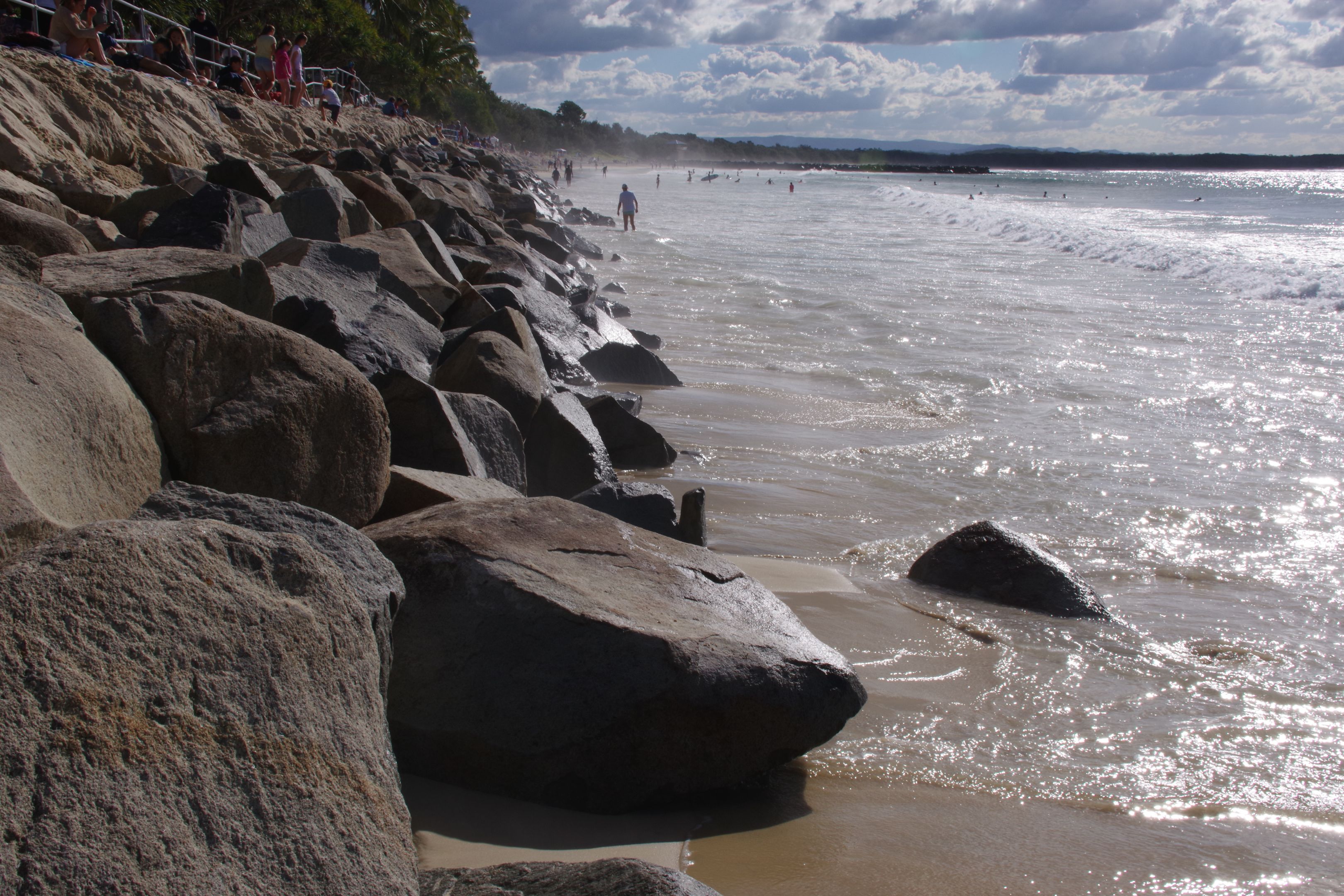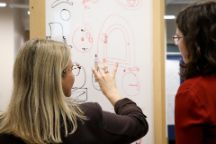Producing electricity while protecting vulnerable coastlines

Professor Richard Manasseh (pictured) is exploring how wave energy converters could help protect coastlines while generating renewable energy.
In summary
- Swinburne researchers are exploring the use of wave energy converters to absorb and reflect the damaging waves that hammer Australia’s vulnerable coastlines during severe weather events
- This renewable energy could then be extracted and fed back into the grid as green electricity
- The project is a collaboration with Victoria’s Moyne Shire Council and Western Australia’s Mid West Ports Authority and supported by an Australian Research Council Linkage grant
As coastal communities around Australia grapple with the threat of dangerous erosion and wild weather, a new industry-linked Swinburne research project is using the power of wave energy to find a solution.
In partnership with Victoria’s Moyne Shire Council and Western Australia’s Mid West Ports Authority, the project will explore the use of wave energy converters to absorb and reflect the damaging waves that hammer Australia’s vulnerable coastlines during severe weather events.
These wave energy converters, which are designed to be partially or completely underwater, extract renewable energy from the ocean that could be fed back into the grid as green electricity.
Project lead, Professor of Fluid Dynamics Richard Manasseh, says the solution is a win-win for local residents, government and industry.
‘Conventional barriers, like sea walls, have a permanent impact on the environment and are a sunk cost for taxpayers,’ Professor Manasseh says.
‘By using a series of controllable wave energy converter units, we could use electricity sales to help pay back the costs involved, while reducing the risks of severe erosion and flooding.’
‘We can also minimise the impacts on the local ecosystem. With care, local biodiversity may be regenerated or even enhanced.’

Professor Richard Manasseh says the project will help protect our vulnerable coastlines.
More than $226 billion of Australian assets are exposed to coastal erosion and flooding, with the cost to protect these assets expected to increase as the impact of climate change continues to be felt around the world.
The three-year project will understand how wave energy converters could switch between modes of protection and regeneration and the impacts this would have on costs and the local environment.
Partnering with industry
The $2 million project is supported by $436,000 in Federal Government funding through the Australian Research Council Linkage grant scheme. The University of Adelaide and UNSW are also collaborating on the project.
Swinburne Chief Scientist Virginia Kilborn says the research shows the importance of partnering with industry to create sustainable solutions to complex problems.
‘By bringing people and technology together, we are creating a local solution that could have extraordinary global ramifications for energy production and the environment,’ Professor Kilborn says.
‘As an organisation that is committed to being carbon neutral by 2025, Swinburne is proud to be working with the community to help drive this important work.’
Moyne Shire Mayor Cr Ian Smith said coastal erosion was one of the key issues council was facing.
‘As a council with a large coastline along the powerful Southern Ocean, we understand all too well the impacts of coastal erosion. We are proud to be partnering with Swinburne to research proactive solutions to this problem.’
Mid West Ports Authority Acting CEO, Damian Tully said, ‘with wave energy having significant impact on the operations at Mid West Ports, we are eager to work with Swinburne on this research project to identify options that could potentially have dual benefit to our coastline and the operating environment at the port’.
-
Media Enquiries
Related articles
-

- Technology
- Science
- Engineering
Victorian students drive green energy transition through international hydrogen competition
Swinburne’s KIOSC, in collaboration with Horizon Educational and Gippsland Tech School, co-hosted the Hydrogen Grand Prix in Melbourne.Friday 26 July 2024 -

- Technology
- Health
New MedTechVic prototypes to transform everyday lives of people with a disability
Swinburne’s MedTechVic has revealed three new prototypes designed through the joint Health-led Manufacturing Innovation Program, in partnership with the Australian Medtech Manufacturing Centre and Safer Care Victoria
Friday 19 July 2024 -

- Business
- Technology
Swinburne’s Luminate Pitch Night 2024 advances innovative ideas for a better world
Swinburne’s 2024 Luminate Pitch Night showcased market-ready ideas from 10 founders
Wednesday 12 June 2024 -

- Sustainability
Expert opinion: Nuclear power has ‘merits’, but investing in renewables ensures long-term energy security
The opposition is promising to build seven nuclear power stations but a Swinburne expert says it's possible to transition our energy system without relying on nuclear power.
Wednesday 19 June 2024 -

- Health
- Technology
Clinical Innovation Fellowships develop creative solutions to Australia’s healthcare challenges
MedTechVic is gearing up to begin its fourth year of the Clinical Innovation Fellowship Program (CIFP), following the highly successful third round in 2023.
Wednesday 19 June 2024

